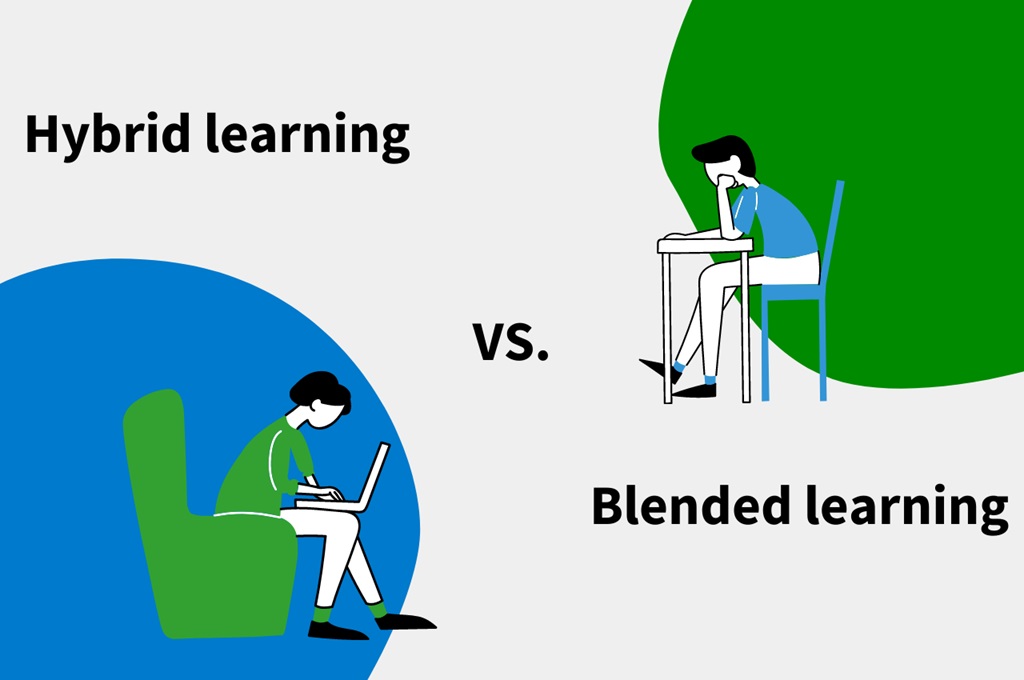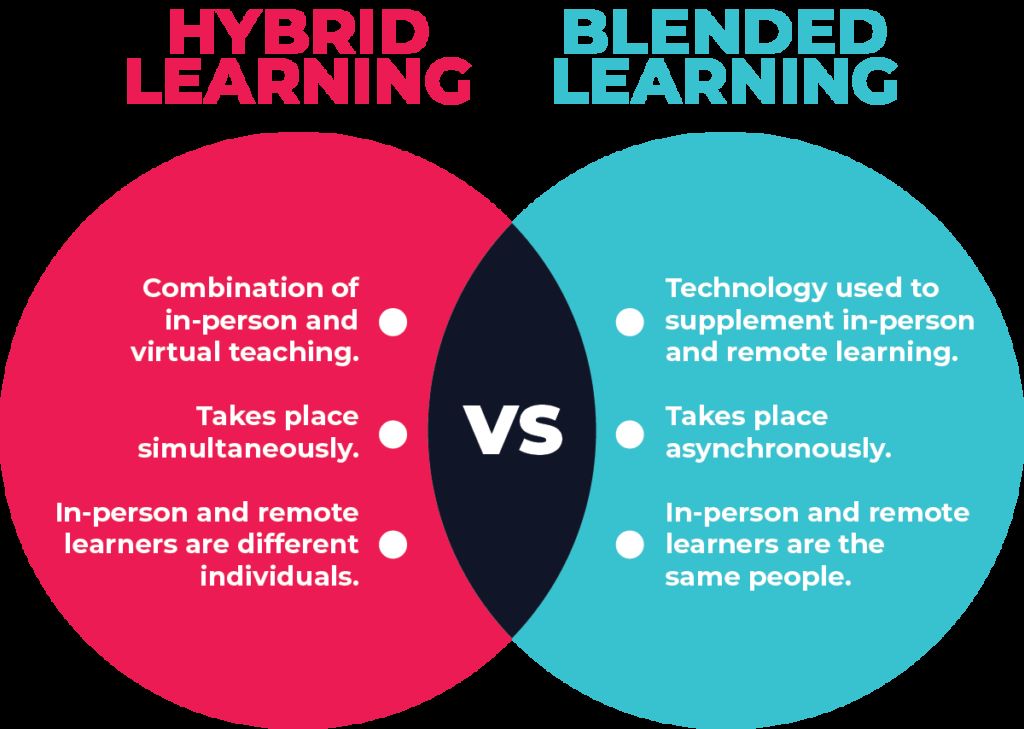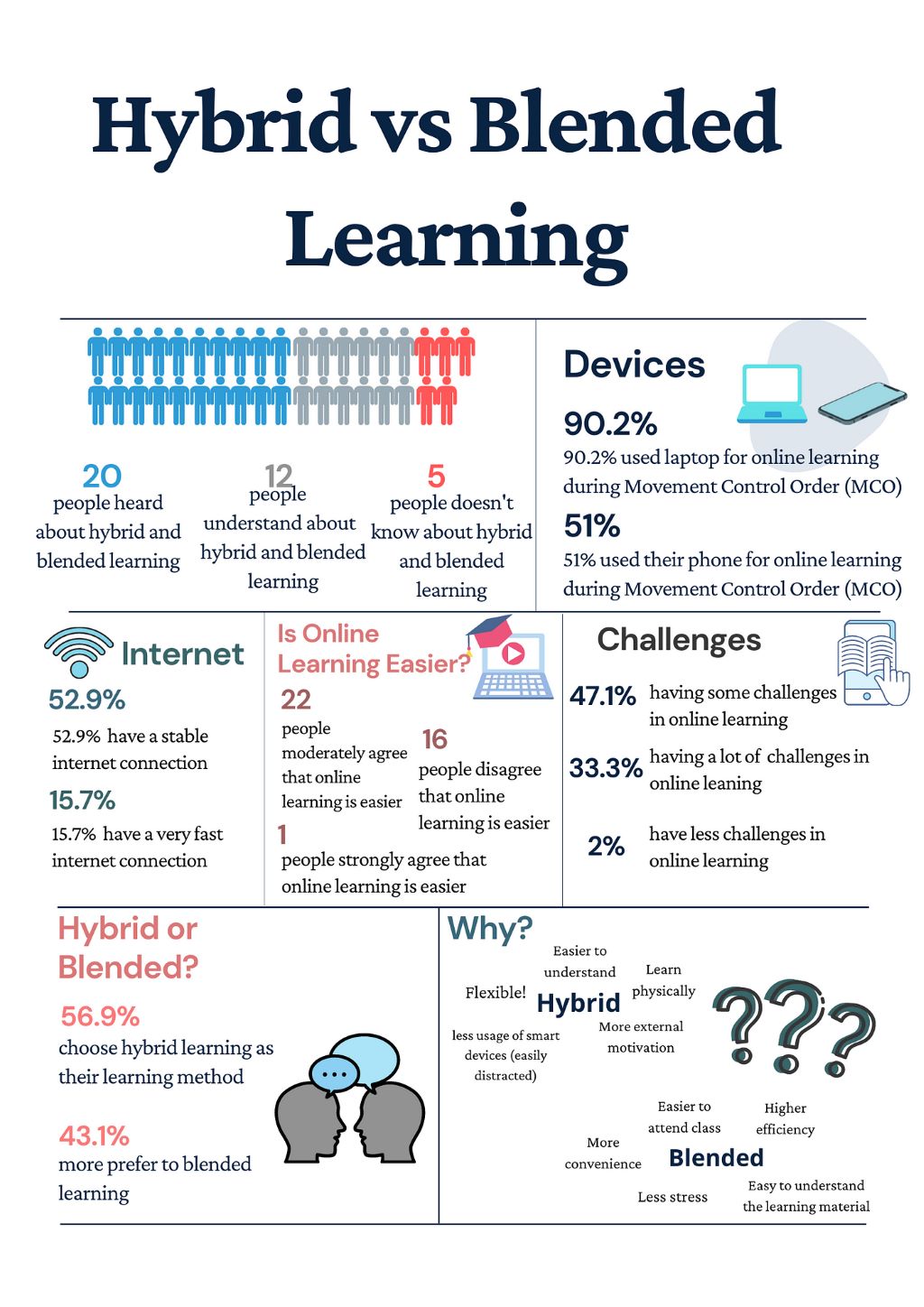
Hybrid vs Blended Learning: What’s the Scoop?
Picture learning as a recipe. There’s no single ‘best’ way to create that perfect outcome. Some folks learn best with hands-on experiences, while others thrive with online materials at their own pace. That’s the idea behind hybrid and blended learning; both methods try to find the ideal mixture of traditional classroom learning and online flexibility.
At first glance, they might seem very similar, but hybrid vs blended learning has key differences. Understanding those helps you select the best option for yourself, your classroom, or your institution.
Blended Learning: Mixing It Up
Imagine having a favorite dish your mom or dad used to make. Now, think of blended learning as that dish, but with a fancy online component. The core foundation – classroom interactions, discussions, and teacher-led lessons – still exists. They are just ‘blended’ with extra learning materials accessible online. Some examples might include:
- Videos: Short, focused lessons that let students rewatch them anytime
- Quizzes & Games: Fun practice tools for reviewing material outside class
- Collaboration Tools: Think of digital discussion boards or shared notes
You still go to class every day, but you also have a bunch of new online resources to support that learning – a blended recipe perfect for students who enjoy traditional classroom structures with a modern touch.
Hybrid Learning: More Like A Choose-Your-Own-Adventure
So, if blended learning mixes things, hybrid learning gives you two different recipe options to choose from. One recipe is focused on in-person classes and discussions, while the other offers the same class material but completely online.
Here’s the main difference between hybrid vs blended learning difference: in hybrid learning, some students might only attend class in person, while others opt for only the online experience. Others still may alternate between in-person and online weeks. Flexibility is the real secret ingredient!

Blended Learning vs Hybrid Learning
Here is a chart comparing hybrid vs blended learning:
| Feature | Blended Learning | Hybrid Learning |
| In-Person Experience | Traditional classroom structure with additional online resources | Option to attend in-person or online classes |
| Flexibility | Moderate flexibility for students | High flexibility for students and instructors |
| Suitability for Learning Styles | Works well for various learning styles but may favor independent learners | Works well for independent learners and those who need flexibility due to location or scheduling constraints |
| Examples | Video lectures, online quizzes, discussion boards | Livestreamed lectures, online assignments, option to attend in-person or online classes |
| Pros | Supplements of in-person experiences suit independent learners and can reduce teacher lecture demands. | Increased flexibility, expanded reach, and potentially reduced overhead costs for schools |
| Cons | Tech issues can create frustration, and extra resources are sometimes needed for students without home internet access. | Might lack the same sense of community. Some students may struggle without a clear structure. |
Let’s take a classic ‘hybrid learning’ example: a college lecture. Let’s say it’s Biology 101.
- In-person Students: Show up on campus, attend class, and maybe complete labs – traditional style.
- Online Students: Watch the same lecture via live stream or a recording. Complete the same assignments but at home on their own time.
The goal is that both groups (in-person and online) have a great learning experience with access to the same quality information.
But Why? Why Add Complexity?
Simple. Life happens. People get sick. Jobs make unexpected demands, and family trips are planned… sometimes ‘being’ in a classroom at a specific time becomes difficult. Here’s how both learning models help:
- Hybrid Learning
- Provides flexibility for everyone – students, teachers, institutions
- Opens opportunities for people beyond immediate geographic location
- Works well for those with accessibility needs
- Blended Learning
- Allows students to learn at their own pace, revisit content easily
- Supports busy schedules and various learning styles
- Keeps in-person classroom experiences vibrant while adding extra dimension
Which Flavor Is Right For Me?

There’s no one perfect answer for everyone. Consider these factors:
- Subject Matter: Is hands-on training critical? Think labs for chemistry or medical simulators for nursing training. Hybrid might be better here. Purely lecture-based classes might work fine with a blended model.
- Learning Style: Do you love classroom discussions, whiteboards, and direct teacher interaction? You’ll likely enjoy blended more. Prefer to work independently? Hybrid can be your best bet.
- Student Age: Consider a child learning to read vs. a college student – they have different needs. Kids often need classroom focus, so blended learning works well. Older students enjoy the independence hybrid learning offers.
Making the Switch: What Should I Expect?
Whether you’re a student adapting to this method or an educator setting it up, some aspects will change:
- For Students:
- Enhanced independence: Expect greater personal responsibility for managing your time and studies.
- Digital skills matter: Online elements mean basic computer comfort is needed. Don’t stress. Resources exist to help you learn!
- For Educators
- Different prep work: You’re designing both in-class and online learning experiences that meet the same goals. That takes planning!
- Tech tools come into play: You’ll use stuff like learning management systems and maybe even video recording/editing, depending on the model.
Is One ‘Better’ Than The Other?
Not really! Both have pros and cons depending on the situation:
Hybrid Learning
- Pros: Increased flexibility, expanded reach, potentially reduced overhead costs for schools.
- Cons: Might lack the same sense of community. Some students may struggle without clear structure.
Blended Learning
- Pros: Supplements in-person experiences, suits independent learners, can reduce teacher ‘lecture’ demands in class.
- Cons: Tech issues can create frustration. Extra resources are sometimes needed for students without home internet access.
Real-World Scenarios
Let’s see how these look ‘in action’!
- K-12 Classrooms: Think about elementary students getting sick – a hybrid system lets them avoid falling behind by accessing lessons from home! Blended is perfect for enhancing regular classes with virtual field trips or simulations.
- College/University Setting: Massive lectures work well as a hybrid to accommodate larger enrollment numbers. Blended helps by adding discussion sections online to supplement those lectures.
- Corporate Training: Onboarding can be hybrid—some topics taught in-person, others via online tutorials accessed whenever it fits a new hire’s schedule. Blended suits compliance training—core content in-person, with quizzes and policy access online later.
FAQs
Can a course be both hybrid and blended?
Technically, yes! A lesson could offer in-person and online attendance options (hybrid) while integrating digital learning tools into the overall lesson (blended).
Are hybrid and blended learning only for remote students?
Nope! Even students physically present in class can benefit from blended learning’s online resources. Hybrid’s flexibility works well for busy schedules, even if classes are on-campus.
Does this replace traditional learning?
Not necessarily. Think of it as a supplement or adaptation. Many subjects still heavily depend on physical presence.
How much tech access is actually needed?
This varies by institution. Schools and workplaces often have solutions for learners without consistent home internet or equipment. Talk to your instructor or HR department!
Is this the future of education?
Possibly in part! It provides new tools, opens accessibility doors, and offers greater flexibility in the way we learn. However, it’s unlikely to completely replace the traditional classroom.
Conclusion
“Hybrid” and “blended” aren’t just fancy buzzwords for the sake of sounding complicated. They represent an intentional evolution in how we think about learning and teaching. Time management, a crucial soft skill, is essential for academic success now more than ever, as it enables learners to effectively juggle the demands of hybrid and blended learning methods. These approaches adapt to our dynamic, technology-infused world while honoring the benefits of in-person experiences, offering immense potential to reach individuals eager to learn in ways that seamlessly integrate with their lives.





